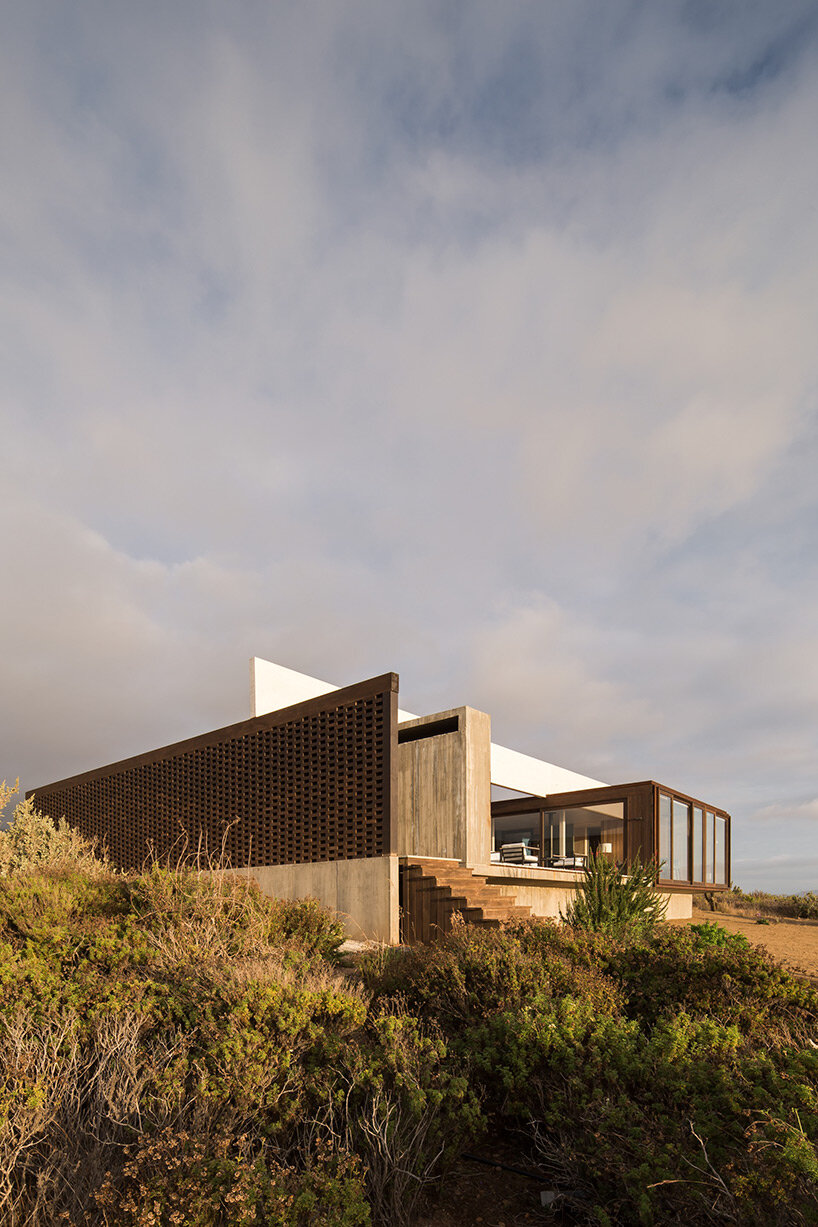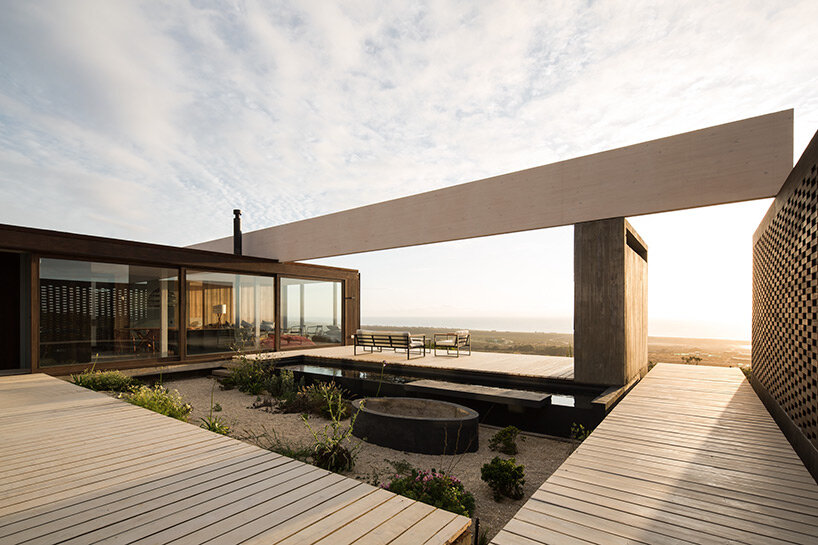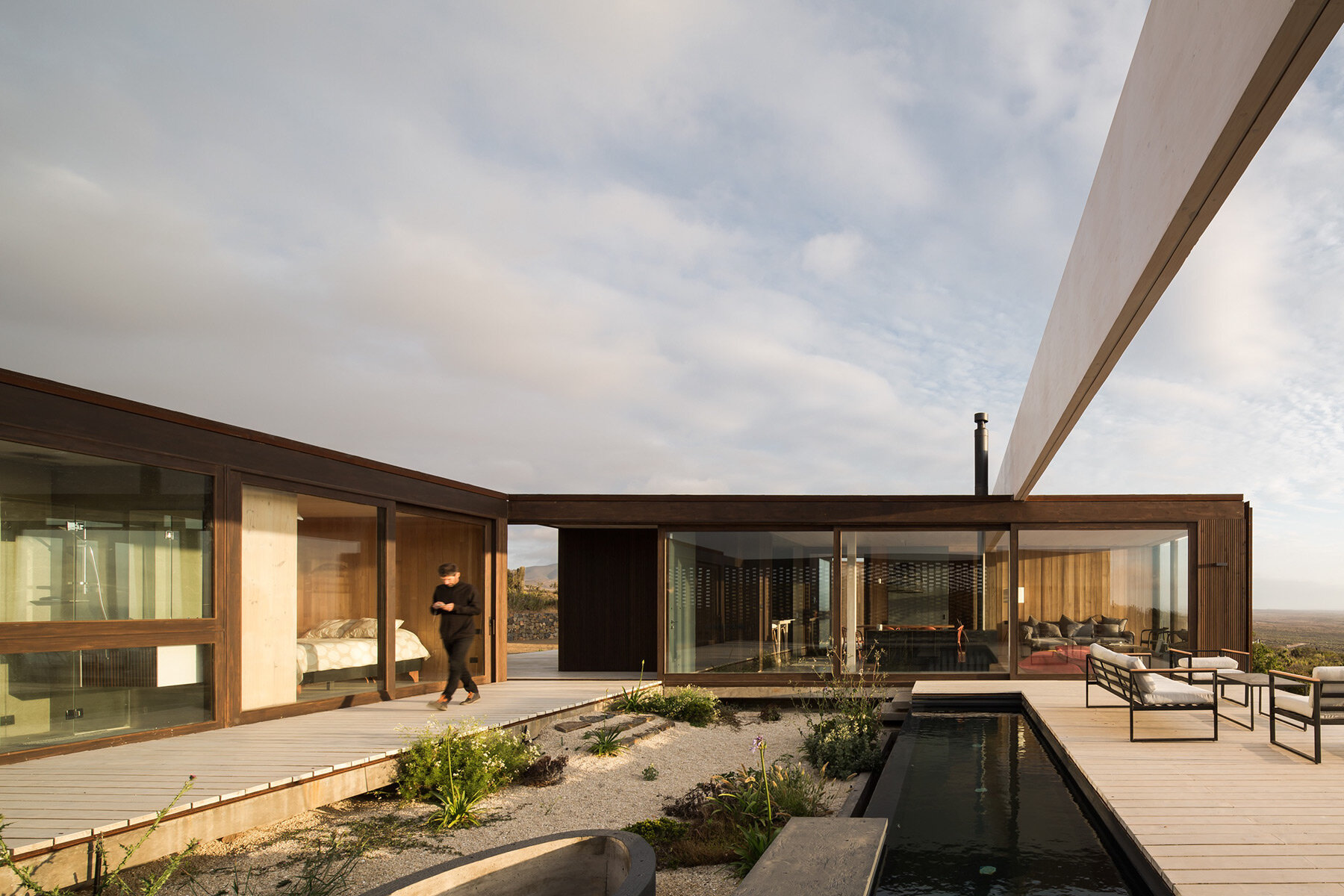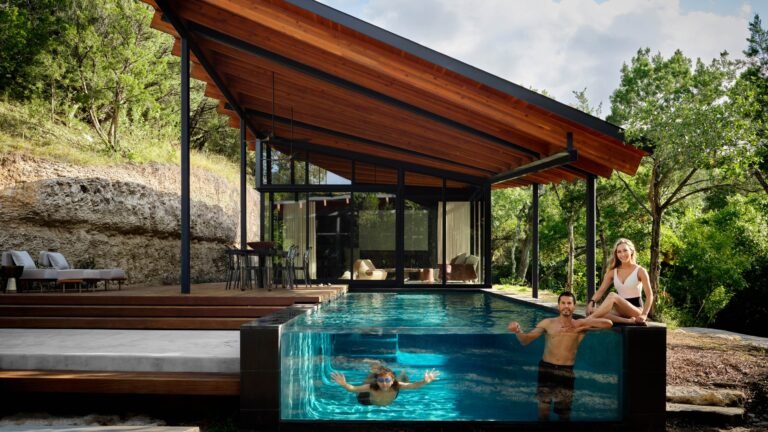beach house by juan pablo ureta takes cues from rock clusters in chilean natural landscape
Juan Pablo Ureta designs a refuge amidst the ocean
Framing the verdant landscape of Huentelauquén, Chile, Casa Las Vizcachas by Juan Pablo Ureta organizes all living spaces around a private courtyard. The architecture takes inspiration from the nearby rock formations, transforming them into a succession of livable volumes and enhancing them with voids and patios of various sizes and shapes. The beach house, which is entirely made of laminated timber, aims to offer a place that conveys a sense of refuge in the midst of this enormous and unfathomable expanse that is the ocean.
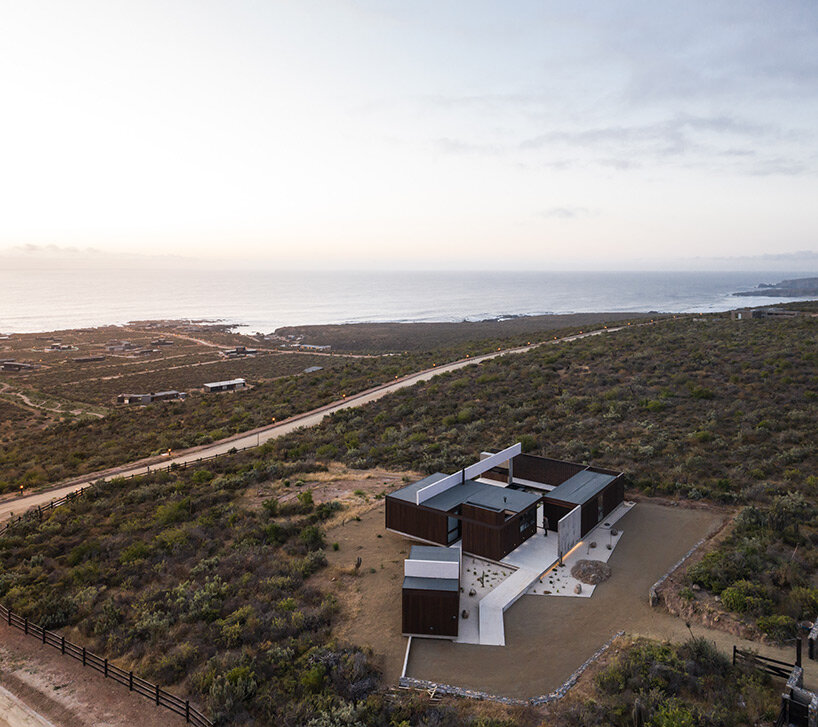
all images by Nico Saieh
a beach house that turns towards itself
Casa Las Vizcachas by Juan Pablo Ureta presents a specific program segmented into three blocks. The first and largest unit houses the master bedroom, private bathroom, and an integrated living room, dining room, and kitchen. The second unit accommodates the bedroom of the owner’s daughter, while it also includes a guest room and a large bathroom. Although both elements touch tangentially, the only way to move from one element to the other is through the terraces. Later, a small gym was erected into a third volume that has been slightly twisted.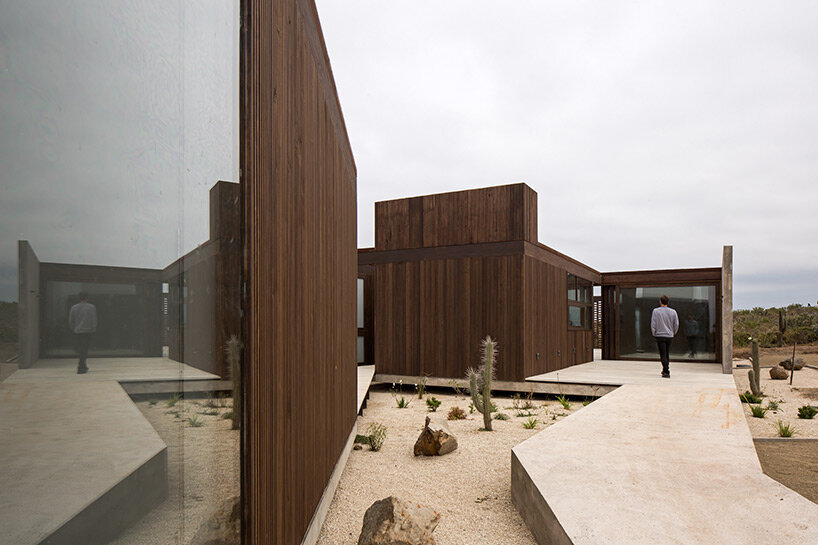
A ramp and a small patio, configured by an exposed concrete wall, provide access to the residential ensemble. When crossing this area, it is possible to see the central patio in foreshortening. The different features in the patio contribute to making it the project’s focal point and improving the experience of living outside: a network of walkways that connects the volumes and organizes the many terraces, a concrete elliptical that acts as a fireplace, and an ‘endless’ swimming pool that, rather than stretching toward the sea, faces the patio, enhancing its position. The entire area is divided by a 21-meter-long laminated wood beam that not only spans the entire length of the main volume’s roof structure, but also serves to ‘frame’ this little area of the surrounding landscape.
Although this is designed as a beach house, the structure strays away from this typology by turning towards itself. It creates visual connections with the sea and the surrounding wildlife, but it does not fully open to the natural surroundings. This results in a unique experience that is different from actually going to sit by the sea, yet still provides the opportunity to enjoy the beach.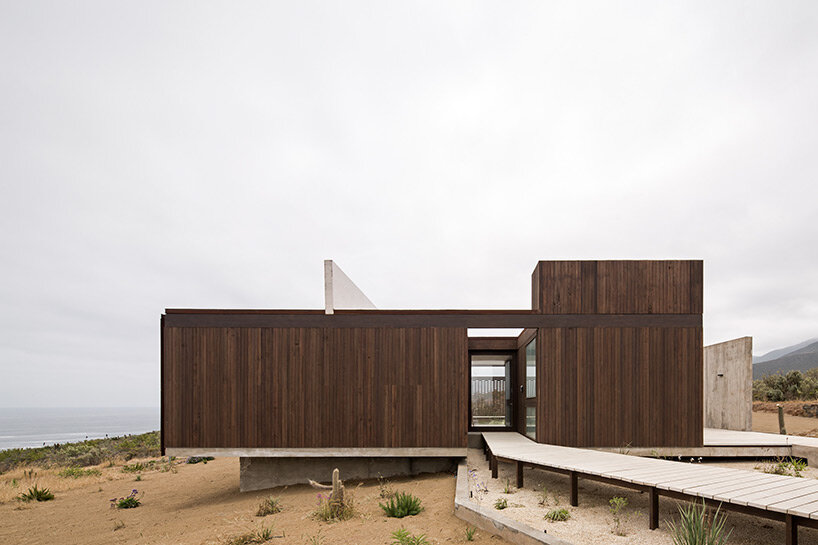
designed in 100% laminated timber
The home is built on a slab of concrete that protrudes from the ground. Besides that, the house is designed 100% in laminated timber. All the structural components and the interior walls were prefabricated in a factory located 800 km away from the site and transported by truck. In this way, the Chilean architect was able to save time in construction and also minimize the impact on the environment.
The external cladding is made of ribbed Raul, while the primary frame is made of laminated pine. The interiors, on the other hand, are covered in Coigüe — a decision made with the goal of creating translucent spaces that are connected to the environment. The 9-meter-long window facade that separates the social sections from the central patio can be fully opened, creating a single, spacious setting in which the boundaries appear to blend together. Nevertheless, the space is contained and protected, thanks to the higher beam, the north wall’s wooden latticework design, and other structural elements.
